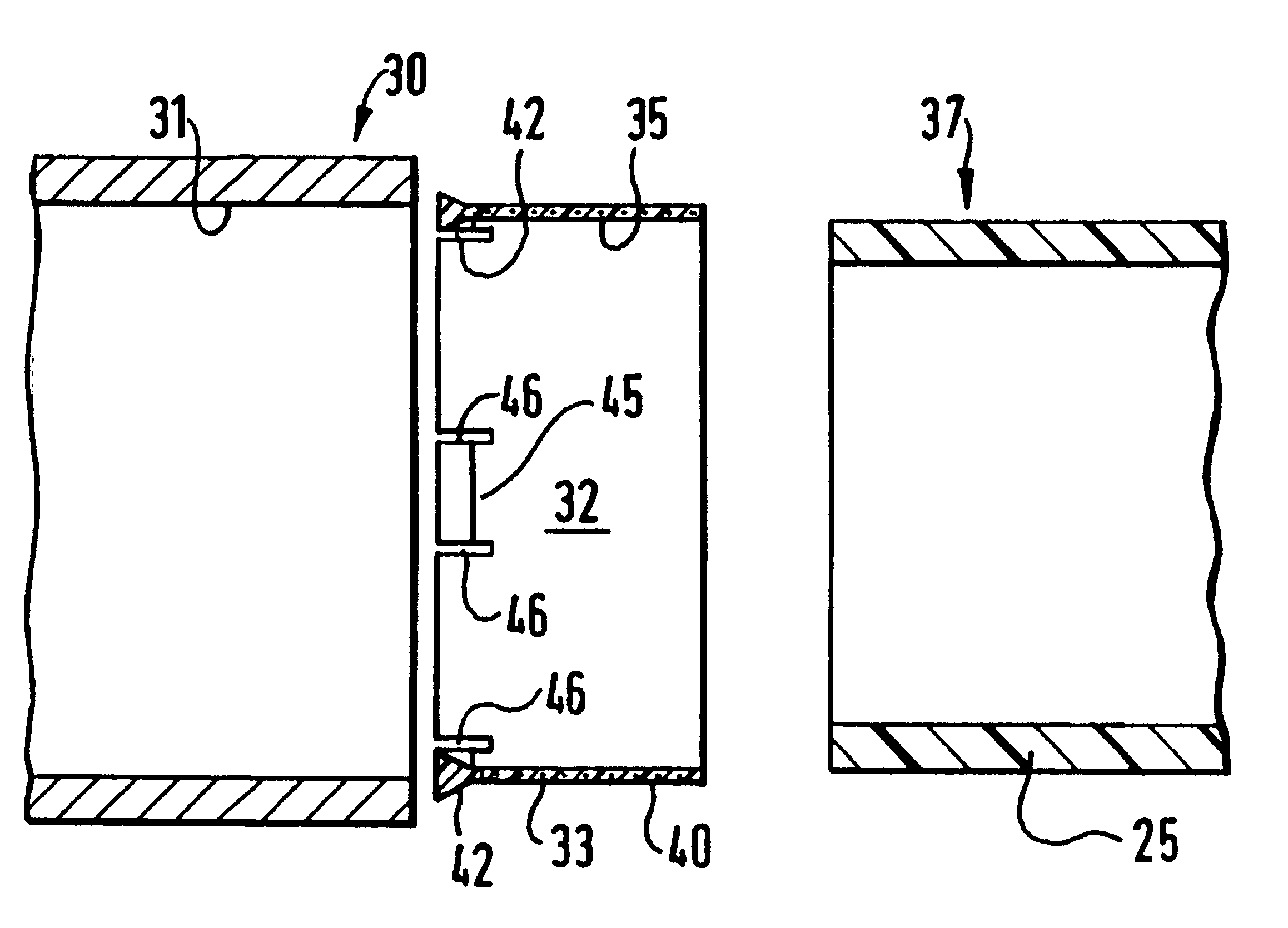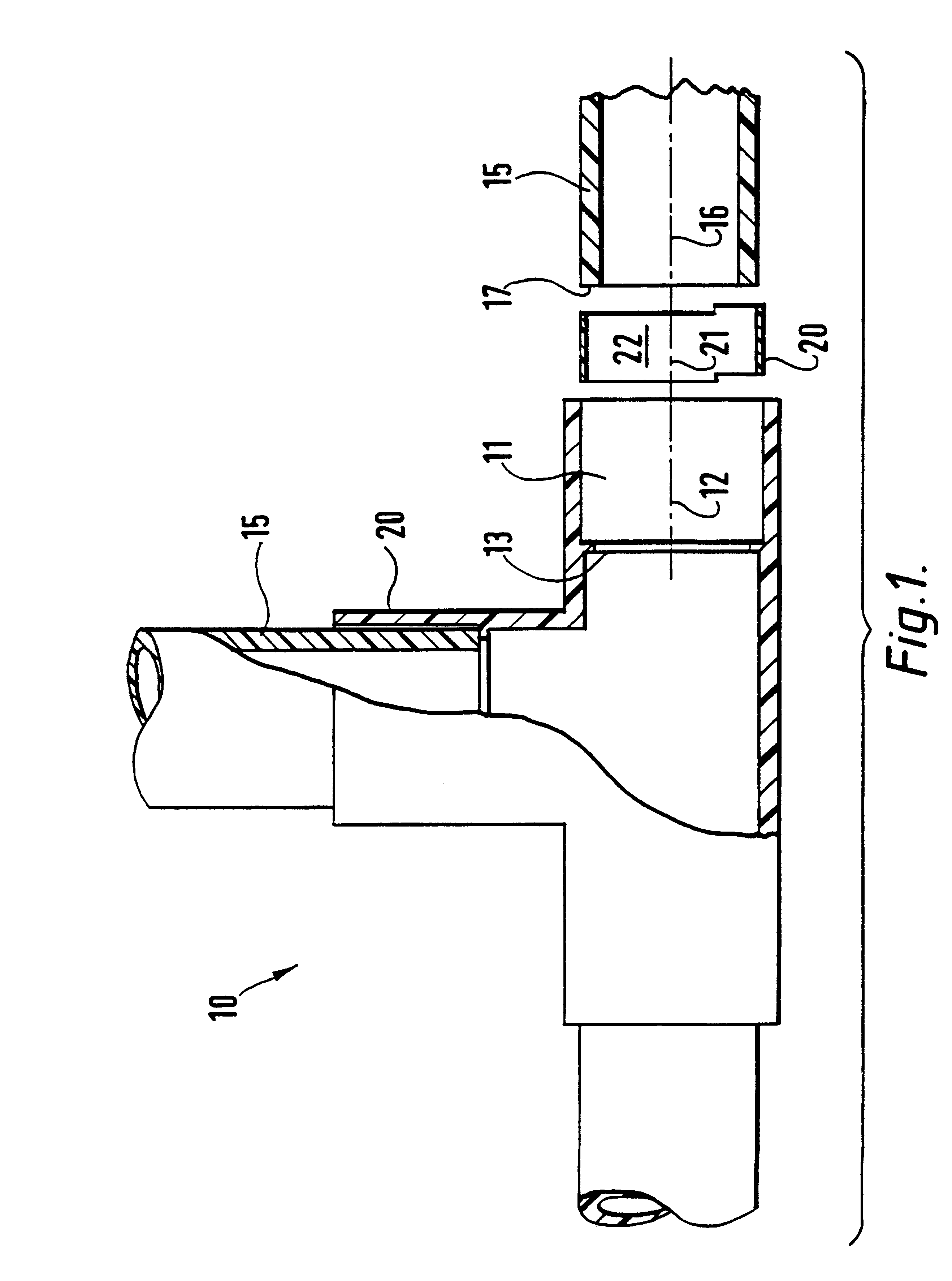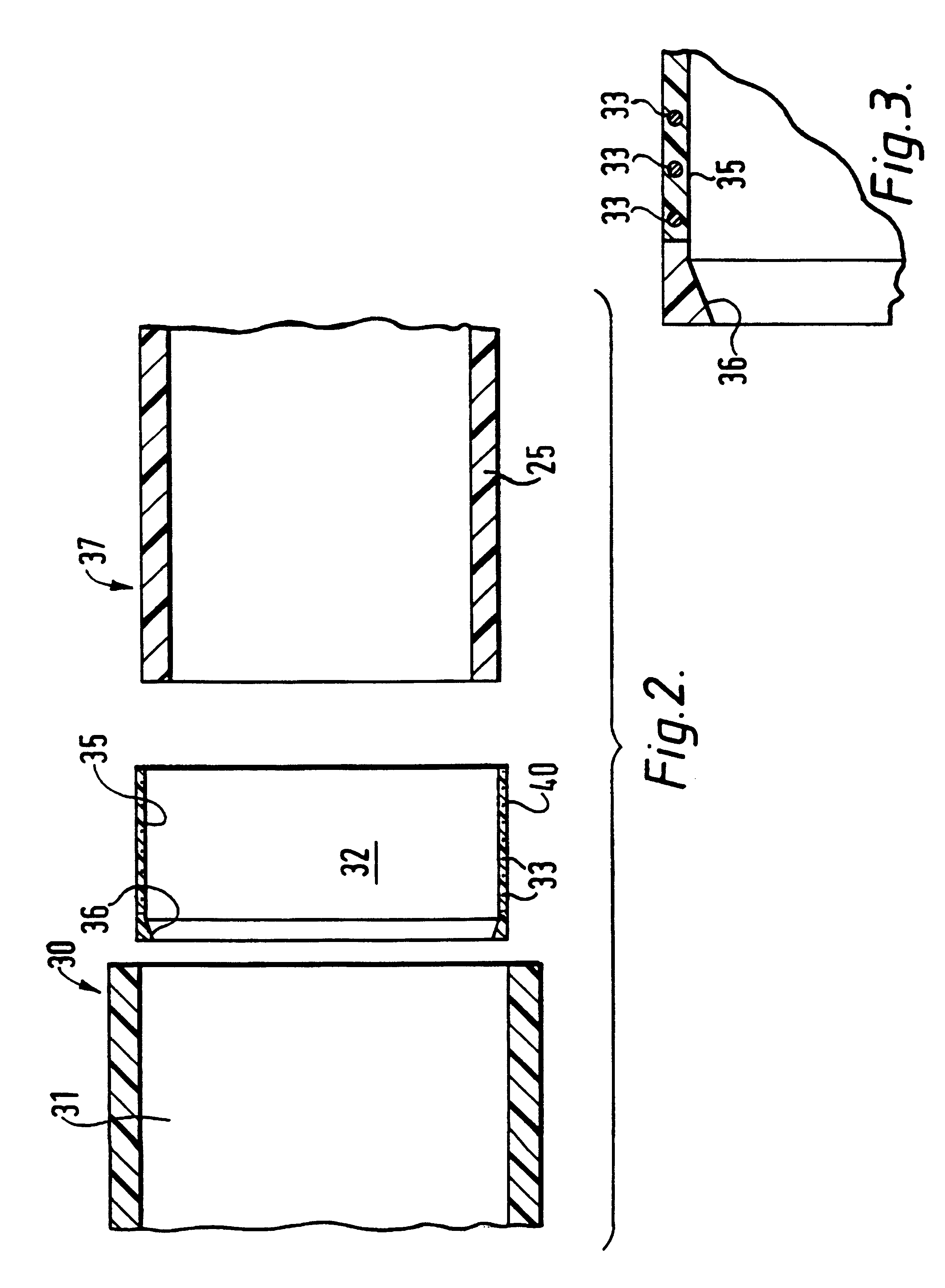Apparatus and method for fusion joining a pipe and fittings
a technology of fusion and fittings, applied in the direction of hose connection, electric/magnetic/electromagnetic heating, mechanical apparatus, etc., can solve the problems of affecting the quality of fusion
- Summary
- Abstract
- Description
- Claims
- Application Information
AI Technical Summary
Benefits of technology
Problems solved by technology
Method used
Image
Examples
Embodiment Construction
The apparatus and method according to this invention can be used to fusion join standard, off-the-shelf thermoplastic fittings either directly to or with respect to a pipe. Referring to FIG. 1, fitting 10 is shown as a standard tee. As shown in FIG. 2, fitting 30 is a standard polyethylene pipe. It is apparent that any suitable fitting known to those skilled in the art, which in this case has a socket end, can be used as fitting 10, according to preferred embodiments of this invention. As used throughout this specification and in the claims the word fitting is intended to relate to any coupling member or other suitable fitting that forms a socket or a flange for joining with a pipe or similar member.
The vertically oriented pipe 15, as shown in FIG. 1, is mounted within socket 11 of fitting 10. In such mounted position, induction heating sleeve element 20 is sandwiched between pipe 15 and fitting 10.
The exploded view portion of FIG. 1, in the horizontally oriented direction on the ri...
PUM
| Property | Measurement | Unit |
|---|---|---|
| conductive | aaaaa | aaaaa |
| non-conducting | aaaaa | aaaaa |
| thermoplastic | aaaaa | aaaaa |
Abstract
Description
Claims
Application Information
 Login to View More
Login to View More - R&D
- Intellectual Property
- Life Sciences
- Materials
- Tech Scout
- Unparalleled Data Quality
- Higher Quality Content
- 60% Fewer Hallucinations
Browse by: Latest US Patents, China's latest patents, Technical Efficacy Thesaurus, Application Domain, Technology Topic, Popular Technical Reports.
© 2025 PatSnap. All rights reserved.Legal|Privacy policy|Modern Slavery Act Transparency Statement|Sitemap|About US| Contact US: help@patsnap.com



